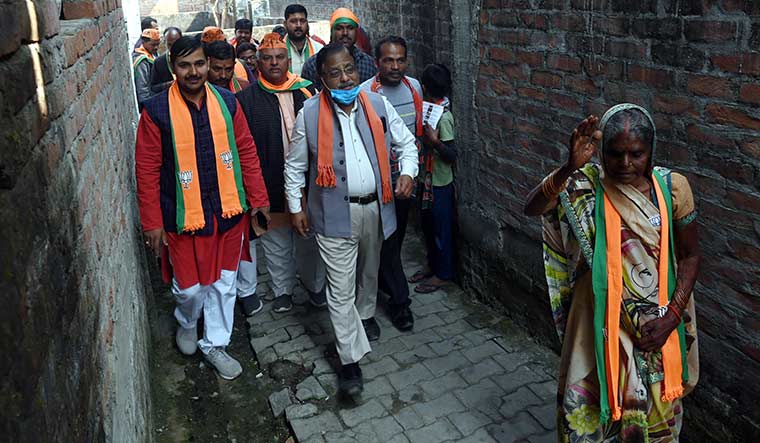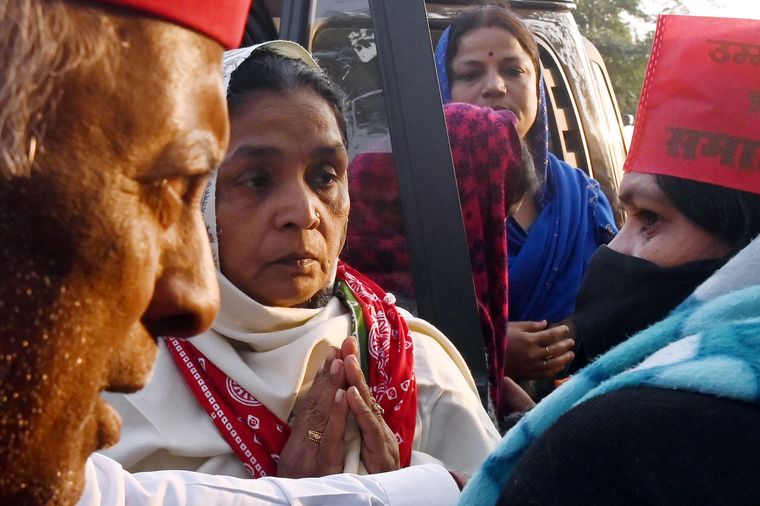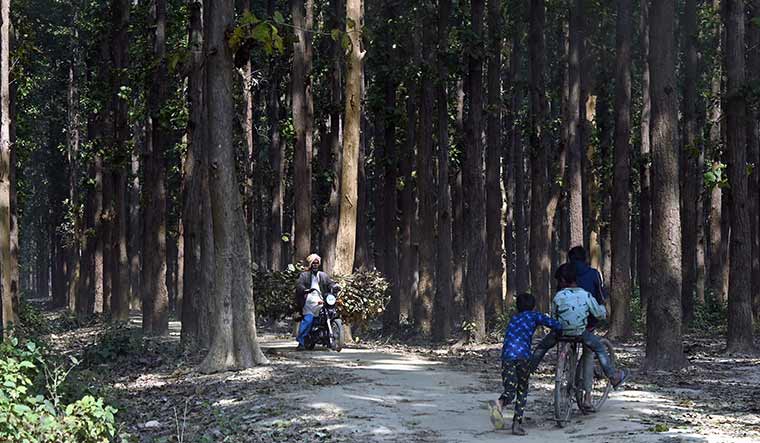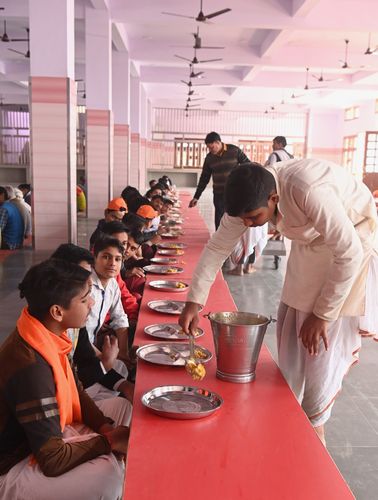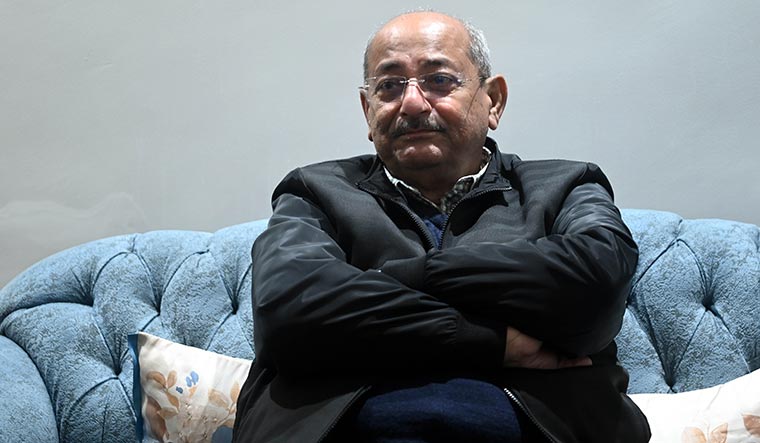I tried to locate the corn-cob spires of the Gorakhnath Math from a few streets away. The temple was not imposing enough to catch the eye from afar; yet, figuratively, it does touch every corner of Gorakhpur, a town near the Nepal border in eastern Uttar Pradesh.
Driving through the streets, we saw snapshots of its influence. The math runs dozens of schools and colleges, a free hospital and bhandara (kitchen). The temple authorities were building a structure near a busy road to rehabilitate street vendors. It was impossible to find someone who had not visited the math.
The temple is the spiritual, geographical and political epicentre of the town. And its mahant (chief priest), Yogi Adityanath, is the chief minister of the state. Gorakhpur has sent Adityanath to Parliament five times; he is trying to get into the assembly this time, from the Gorakhpur Urban seat.
His poll machinery, expectedly, is in full force. As we entered the temple complex, spread over 55 acres, the mood was festive. The Khichdi Mela was on. On the first two days of the annual, month-long event, devotees offer khichdi ingredients. As per tradition, the initial offering comes from the royal family of Nepal. Apparently, lakhs of devotees, mostly from Purvanchal and Bihar, turn up in the first two days.
In one corner of the complex, a merry-go-round, a Ferris wheel and a Columbus boat attracted children. These rides are a highlight of the mela. Rapper Badshah’s ‘She Move it Like’ was on loop near the rides. Trying to keep pace with it was a fast number, being shown on a large screen, featuring stills of Adityanath. “A large number of those who operate the rides and stalls are Muslims. In the evenings, you can also see Muslims visiting the math,” said a staff member, pre-empting any question about communal harmony in the area.
People were thronging a building outside the inner temple; this was election-related. A Hindu Seva ashram—an orange building where devotees spend the night—was converted into a temporary BJP campaign office. A truck pulled up as we entered. It was full of publicity material, including pamphlets and scarves. Under P.K. Mall’s watchful eyes these were taken to a store room. He is the general secretary of the Hindu Yuva Vahini, a right-wing organisation Adityanath founded in 2002. Mall was in the merchant navy for 10 years before that. He also runs a school in the area.
The Vahini was Adityanath’s vehicle to political stardom, and has often been in the headlines for the wrong reasons. “There is no negative news about us,” said Mall. “People just make it up. The truth about what we do is in front of everyone.” So, what exactly do they do? “Social service,” he said. “We create awareness on the environment, herbal plants and government schemes.”
He also refuted allegations that Adityanath’s elevation as chief minister had weakened the Vahini. They still had 50,000 members in town, he claimed. For clarity, we asked Mall if he was working for the BJP or for the Vahini. It did not matter, he said; he was working for “Maharaj ji (Adityanath)”, he said, before taking his volunteers to campaign door to door and enrol voters.
The temple complex had its share of green, too. There were manicured gardens, mini temples and a lake with small boats. Adityanath’s favourite spot, though, is the gaushala (cow shelter); he spends a lot of time there whenever he is home.
Inside the bhandara, Kothari baba supervised lunchtime. Sanskrit teachers and students from a nearby college settled down on a long, red mat. They were served rice, dal, curry and roti. “This place promotes equality,” said Kothari baba. “Your background, caste, religion or social status does not matter. Anybody can come and eat for free; nobody will ask them any questions.” According to the math management, nearly 300 eat here daily.
The Gorakhpur Urban constituency has close to 4.5 lakh voters. Of these, 70,000 are Brahmins. And one candidate is pinning her hopes on them—Subhavati Shukla of the Samajwadi Party.
Outside a modest house in nearby Allahadadpur, half a dozen youngsters sat in plastic chairs. One of them was Aravind Dutt Shukla, the elder son and campaign manager of Shukla. The duo is banking on the image of former state BJP vice president Upendra Dutt Shukla, who died in May 2020.
A room on the first floor of the 300sqft home is a shrine to his memory. “In the 2018 parliament byelections, my father, who contested on a BJP ticket, was defeated because of internal politics. In 2020, he died of brain haemorrhage. He could not take the betrayal,” said Arvind. A former private employee, Arvind met Samajwadi president Akhilesh Yadav this year and joined the party.
His soft-spoken mother admitted to being a political novice; she broke down after a few words. “My husband sacrificed his life for the BJP,” she said. “After he died, not once did Yogi visit our home or enquire about my children.” The family was hurt and expected voters to be sympathetic to its plight.
Out on the streets, though, it seemed to be mostly saffron. The Congress and the Bahujan Samaj Party were near invisible; the talk was whether Chandrashekar Azad of the Bhim Army, who is taking on Adityanath, would win the dalit vote.
At nearby Rajbhar Tola, in one of the Yadav-dominated slums, we met the sitting MLA, Radha Mohan Das Agrawal of the BJP. He has made way for Adityanath this time. Smiling and with folded hands, Agrawal went from house to house with young party men, seeking votes for the chief minister. In the evening, sitting MP and Bhojpuri actor Ravi Kishan did the same.
Back at the math, on the first floor of the campaign office, a commerce lecturer in one of the math’s colleges busied himself with backroom work. Soon, a man considered crucial to the campaign walked into the adjoining hall, now a makeshift media centre. Pradeep Rao, the principal at one of the math’s postgraduate colleges, sat in front of a huge poster of Adityanath and Prime Minister Narendra Modi. He gave us the lowdown. The campaign office hosted several shades of saffron. The groups supporting Adityanath were split into five categories—BJP, the Rashtriya Swayamsevak Sangh and its affiliates, other Hindu groups, the math and its supporters, and individual followers of the chief minister. Representatives of these groups had formed a core committee, which assigns work and steers the campaign.
“Earlier, it was a challenge to get everyone on one platform,” said Rao. “Now, Modi and Yogi have emerged as symbols of admiration and everyone is ready to work for them.”
As part of the BJP’s digital strategy, he said, WhatsApp groups with more than 1.25 lakh members had been created to amplify videos and slogans. “This election is above party lines. People, on their own, are working for Yogi ji’s victory. We are only concerned about becoming complacent because we have little to do,” Rao said with a laugh.
What about Muslim voters? “Muslim women are the BJP’s silent voters,” he claimed. “As per our estimates, 30 per cent of the women will vote for us. They are quite happy with our schemes and the triple talaq [law].”
We headed out to examine this claim and ended up at the sprawling hospital-cum-home of Dr Aziz Ahmad, a senior physician who is vocal about politics and social matters. He scoffed at the idea of Muslims voting for the BJP. “The Muslims of Gorakhpur are disenchanted,” he said. “They do not have much interest in politics now.”
He said that, before delimitation, Muslims were a force in the constituency and had active leaders. Not anymore. The seat now has about 25,000 Muslim voters, most of whom, he claimed, supported the Samajwadi Party.
A photo of his ancestors with Jawaharlal Nehru hung on the wall of his drawing room. The family has long been associated with the Congress, but feels it has lost steam.
Aziz was also concerned about the communal atmosphere in Gorakhpur, which he said had worsened in the past few years. More than political issues, religious ones dominate the elections, he said.
The BJP, which benefits from the addition of faith to the electoral cauldron, would not complain. It has, however, made sure to highlight its non-religious achievements, and quite loudly so. Among these is the AIIMS in Gorakhpur, the improvement of law and order, infrastructure development, beautification work and the tackling of Japanese encephalitis.
Also read
- 'BJP scores big': Election results so far in Goa, Punjab, UP and Uttarakhand
- UP polls: Akhilesh Yadav's solo fight to recapture Lucknow
- Akhilesh Yadav interview: I have learnt how to defeat the BJP
- Dalit identity has become more assertive, but Mayawati has moved at a snail's pace
- Manifestos are fake; we do what we say: BSP’s Satish Chandra Misra
- No samajwad in Samajwadi Party: Aparna Yadav, BJP
The party has also projected its work in uplifting the Vantangiyas, the forest-dwelling people the British had originally brought in to plant trees in India. The community, which spans 23 villages on the outskirts of Gorakhpur, was bereft of basic rights for a long time. We drove 40km out of Gorakhpur into the forests of the Baki range to meet them.
Daulatpur village, where some of the Vantangiyas live, was enveloped in mighty teak and sal trees. They told us stories of oppression dating back a century; they were considered specialists in growing forests and moved from place to place after planting enough trees. “Our condition was pathetic,” said Sitaram, a village elder. “We were ill-treated by the British and also the forest department of our country. You see this mark? An official beat me for not planting saplings properly. We were not even paid money; we were only allowed to grow crops in some corner of the forest.” Sitaram is one of the few who planted trees for a living till the practice was stopped in 1990.
After decades of struggle, the community now has voter IDs, ration cards, solar power and government-sanctioned houses. However, poverty and inaccessibility remain major problems. “Nobody is willing to marry our children, because they do not want to travel into the forests,” said a villager. Adityanath has stood by the community in its struggle for years and also celebrated Diwali with them last year. He had, in 2018, accorded some of their settlements the status of revenue villages.
However, all their needs have not been met, and another term for Adityanath would help. Their villages, though, fall out of the Gorakhpur Urban constituency, and they have no role to play on voting day—March 3. They can only hope and pray. Adityanath thrives on faith.



